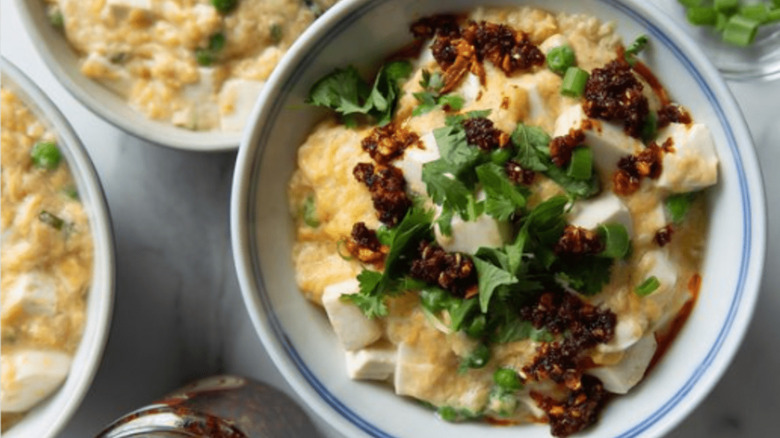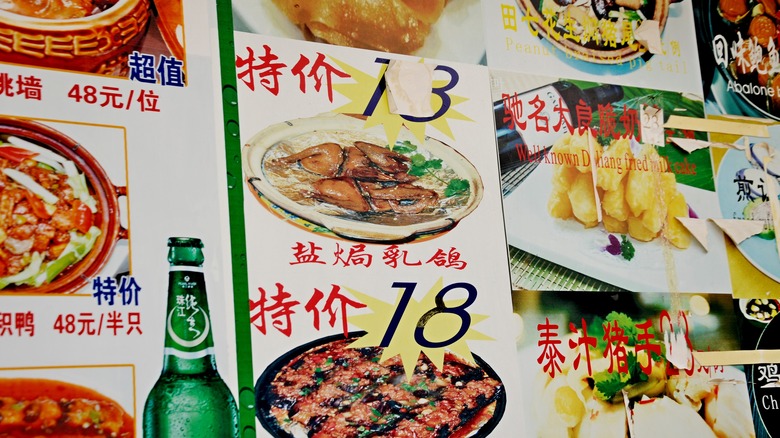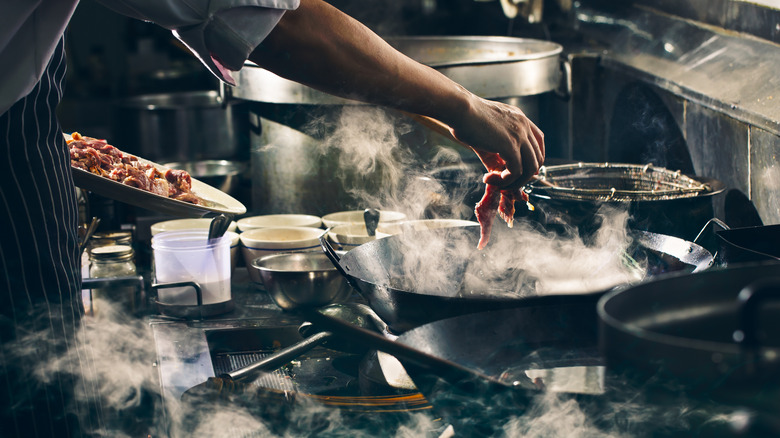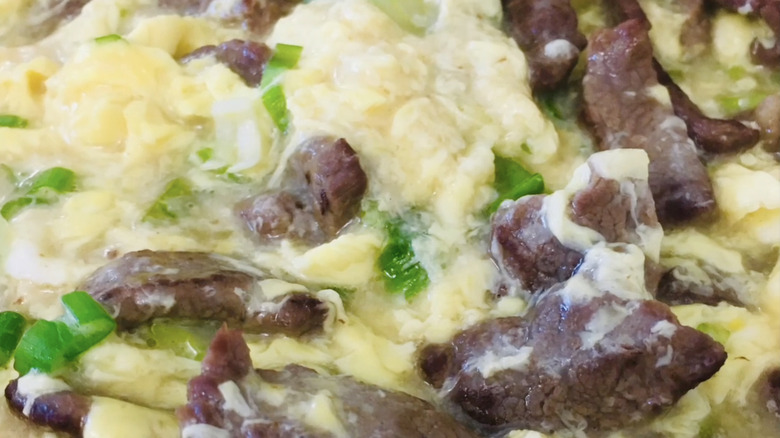Slippery Eggs: The Lush Cantonese Preparation You Should Try Next
While eggs are typically showcased at the start of the day in American culture, they're the leading ingredient in a handful of dishes worldwide. In Chinese cuisine specifically, eggs are the star of various main courses in just about every style, from braised to cured. Steamed eggs with pork, chicken egg foo young, egg dumplings, and egg drop soup are just a few of the many egg-dominate Chinese recipes, shares Kaitlin of the Woks of Life. This Cantonese dish revolves around eggs in scrambled form and delivers a flavorful, protein-packed comfort meal.
Yan-Kit So was likely one of the first to introduce Cantonese "slippery eggs" to the Western world in her 1992 cookbook, "Classic Food of China." Described as an "everyday Cantonese family dish," Yan-Kit So's straightforward steps celebrate the simplicity of the recipe. Slippery isn't the most common way to describe eggs, but in this case, the vocabulary alludes to a soft scramble. Tossed with bold umami flavors, this versatile meal is packed with a flavorful kick.
The history of Cantonese cuisine and its ingredients
Cantonese dishes are often referred to as the most elevated cuisine of China, making them a popular focus of Chinese restaurants around the globe. Born from the province of Guangdong, Cantonese food is rich in flavor thanks to the region's flourishing agriculture and proximity to the Pearl River Delta (via China Tours).
The coastal capital, Guangzhou, provides a perfect gateway for fresh and unique imported goods. With China being the largest producer of eggs in the world, per International Egg Commission, there's no surprise they're a prominent ingredient in Chinese cooking. According to Reuters, the country consumes nearly one billion eggs a day. Despite the complex flavors Cantonese dishes like slippery eggs deliver, they can be surprisingly easy to throw together.
The main ingredients here are relatively common, making the preparation the primary undertaking. Aside from Shaoxing wine, the necessary ingredients are probably hiding in the back of the fridge or pantry. With some eggs and the desired protein, anyone can whip up a variation of slippery eggs in no time.
How to recreate slippery eggs at home
According to Yan-Kit So's recipe, this dish begins by marinating the beef (via CKBK). A simple concoction of soy sauce, Shaoxing wine, tapioca flour, water, sugar, salt, and pepper makes for the perfect coating. After letting the beef slivers sit for about 20 minutes, toss them in smoking hot oil until it reaches the desired temperature. Then come the allusive slippery eggs.
After beating the eggs until smooth and fluffy, toss the customary fixings of salt, pepper, and green onion before incorporating the meat. This next part is when it can get a little tricky. The beefy egg mixture is then poured back into the wok with the remaining oil at medium heat, but not in one motion. Rather than just dumping the mixture in and letting it cook off, the egg must be moved around so it evenly cooks on the bottom of the wok. As Yan-Kit So says, "Repeat this action until all the liquid egg has solidified around the beef slivers."
The many variations of silky Cantonese eggs
The dish typically features beef, but J. Kenji López-Alt, who popularized slippery eggs in his cookbook "The Wok," opts for a vegetarian route with silken tofu (via Serious Eats). He also thickens the dish with cornstarch rather than tapioca flour. The marinade is ruled out since Kenji holds out on the beef, but he still amps up the tofu with chicken stock, garlic, ginger, scallions, and a splash of wine. He then puts another spin on the recipe by adding peas.
John Chu took a stab and shared his efforts via YouTube. Chu's approach combines both Yan-Kit So and López-Alt's techniques. He sticks with beef but adds cornstarch to give it more thickness. Chu also opts for water rather than oil when slowly adding his whipped eggs to the wok, likely creating an even softer scramble. Every chef agrees on one cooking tip: not overcooking the eggs. The result is a luscious, silky texture, which is key to the Cantonese egg dish.



